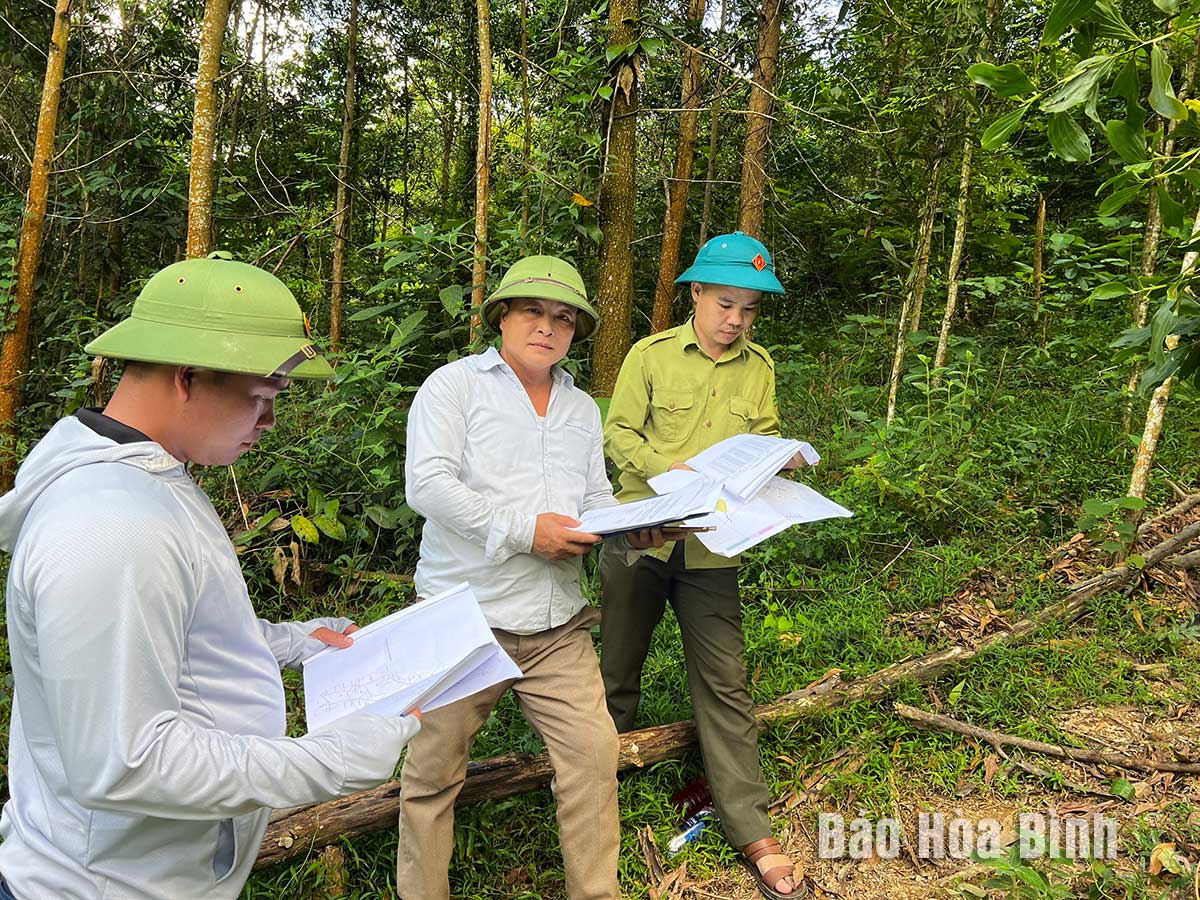
Given the importance of the Hoa Binh - Moc Chau Expressway (the section from Km19+000 to Km53+000 in Hoa Binh province) to socio-economic development of the province and the region, Hoa Binh is boosting coordination with the investor and relevant units to address difficulties and obstacles to speed up the settlement of procedures so as to launch construction on schedule.
Officials from management board for transportation
works construction investment projects coordinate to examine and promote site
clearance in vicinity of Da Do hamlet in Thanh Son commune, Mai Chau district.
The Hoa Binh - Moc Chau Expressway project (the
Km19+000 - Km53+000 section) is invested with almost 10 trillion VND (399
million USD) in total, comprising over 8.24 trillion VND from the central
budget and 1.75 trillion VND from the provincial one. It starts in Da Bac town
of Da Bac district in Hoa Binh province and ends in Chieng Yen commune of Van
Ho district, Son La province.
Implemented since 2022, the project is scheduled
to be completed in 2028. In the first phase, the road will have two lanes and
total width of 12 metres, including 11 metres of road surface. Once fully
completed, it will meet expressway standards and have a design speed of 80km
per hour. The route will also include three tunnels and 30 bridges.
Dinh Anh Tuan, Director of the provincial
Transport Department and deputy head of the assistant group for the project,
said the group has given advice to the chairperson of the provincial People’s
Committee about solutions and orientations for accelerating the compilation and
verification of the technical design dossier and cost estimates.
Bui Ngoc Tam, Director of the management board
for transportation works construction investment projects, noted under the
provincial administration’s direction, the board has been working closely with
relevant units to prepare necessary conditions for starting work on the project
on the occasion of the National Day (September 2) as scheduled.
He added the project was allocated more than
4.52 trillion VND, 95.2 billion VND of which has been disbursed. All the 4.65
trillion VND sourced from the socio-economic recovery and development programme
for the project is expected to be disbursed fully by December 31, 2024.
To ensure work starts as planned, the provincial
People’s Committee has proposed the Ministry of Natural Resources and
Environment, the Ministry of Construction, the Ministry of Transport, along
with related parties continue assisting Hoa Binh to tackle bottlenecks to the
project implementation, change farmland and forest land use purposes, together
with other issues to accelerate progress and promote investment
effectiveness.
Hoa Binh province is undergoing a dynamic transformation amid Vietnam’s national digital transition. Building on Poliburo’s Resolution No. 57-NQ/TW on breakthroughs in science, technology, innovation, and national digital transformation, the province has rolled out a wide range of practical action plans. A standout initiative is the "Digital Literacy for All” movement, an effort to ensure that no one is left behind in the digital era.
Hoa Binh province is undergoing a dynamic transformation in the wake of the national digital transformation movement. Building on Resolution No. 57-NQ/TW of the Politburo on breakthroughs in science, technology, innovation, and national digital transformation, the province has implemented a wide range of practical action plans. A standout initiative is the "Digital Literacy for All” movement ambitious effort to ensure that no one is left behind in the digital age.
With a spirit of unity and proactive problem-solving, the Party Committee, the government and the people of Dong Lai Commune (Tan Lac District) have made great strides in implementing the resolutions of the 24th Party Congress of the commune for the 2020 - 2025 term. Focusing on leadership and practical actions, the commune has brought the Party’s resolutions into daily life, creating strong impacts and pushing the local development forward.
Amid the nationwide push for digital transformation, young people in Hoa Binh Province are stepping up as dynamic pioneers, applying technology to enhance Youth Union operations and expand the reach of youth-led initiatives. Through creativity and adaptability, Youth Union organizations at all levels have introduced a series of practical solutions, contributing to modern governance and community development.
In recent years, An Nghia commune, located in Lac Son district, has stepped up administrative reform, focusing on improving the quality and efficiency of its single-window service unit for receiving and processing administrative procedures. These improvements have helped create favourable conditions for local residents and organisations to handle administrative procedures, contributing to the commune’s broader socio-economic development.
The Prime Minister-approved master plan to develop the multi-use value of forests ecosystems through 2030, with a vision to 2050, aims to improve the management and sustainable use of forest resources, create jobs, increase incomes, and improve the living standards of ethnic minorities, people in mountainous and remote areas, forest workers and those living near forests.



